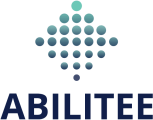Once upon a time I have practiced physiotherapy in Israel, and have had the pleasure to work with many young soldiers.
One of the most seen over-exercise related problems has been – Shin Splints (SS) causing pain along the shin bone .
It develops when the muscles and bone tissue become overworked due to repetitive activity.
Why soldiers?
- Their training involves much “start-stop” activity
- Challenging training that involves hill sprints or interval training.
- Newly enlisted soldiers were often not well acclimatised to the army fitness routine.
- Poor foot biomechanics- flat feet
- Despite recent effort to improve, many soldiers suffered inadequate footwear.
SS can be easily identified, but getting rid of the pain can be quite challenging!
What’s so special about this cohort of patients?
Compliance and no time!
Those soldiers are eager to recover and go back to their training and army obligations.
While they desperately want to be treated and to do better, they just don’t have the time for it!
So how can we treat them in minimal time and have the best results?
We’re all aware of the different strategies – REST, minimalize the aggravating activity, gently stretching, Kinesiotaping,manual techniques ,TENS, US, and Programme of Exercises (directing the Hip and Ankle).
but the question remains, how to do this quickly and effectively?
Gattie et al, 2017, published in JOSPT an interesting Systematic Review about the Effectiveness of Trigger Point Dry Needling (DN) for Musculoskeletal Conditions by PT participants.
They found out that:
DN may be most effective in reducing pain and increasing PPT and functional outcomes in the immediate to 12-week treatment period.
When DN is utilized in appropriate patients, it may aid in decreasing musculoskeletal pain, allowing for additional, more active pt interventions to maximize functional outcomes and reduce patient disability.
To summarize, beside the analysis and correction (if it is possible) of Body mechanics of squatting, jumping, running, and walking and a recommendation of modification to footwear, using the DN really changed the course of treatment. The soldiers suffered less pain, were more flexible, and much more engaged in their exercise programme.
DN is an ADD ON Treatment. We normally wouldn’t apply DN techniques as a standalone solution. Rather, we will use it as an effective technique to reduce pain, gain flexibility and to allow other interventions.


